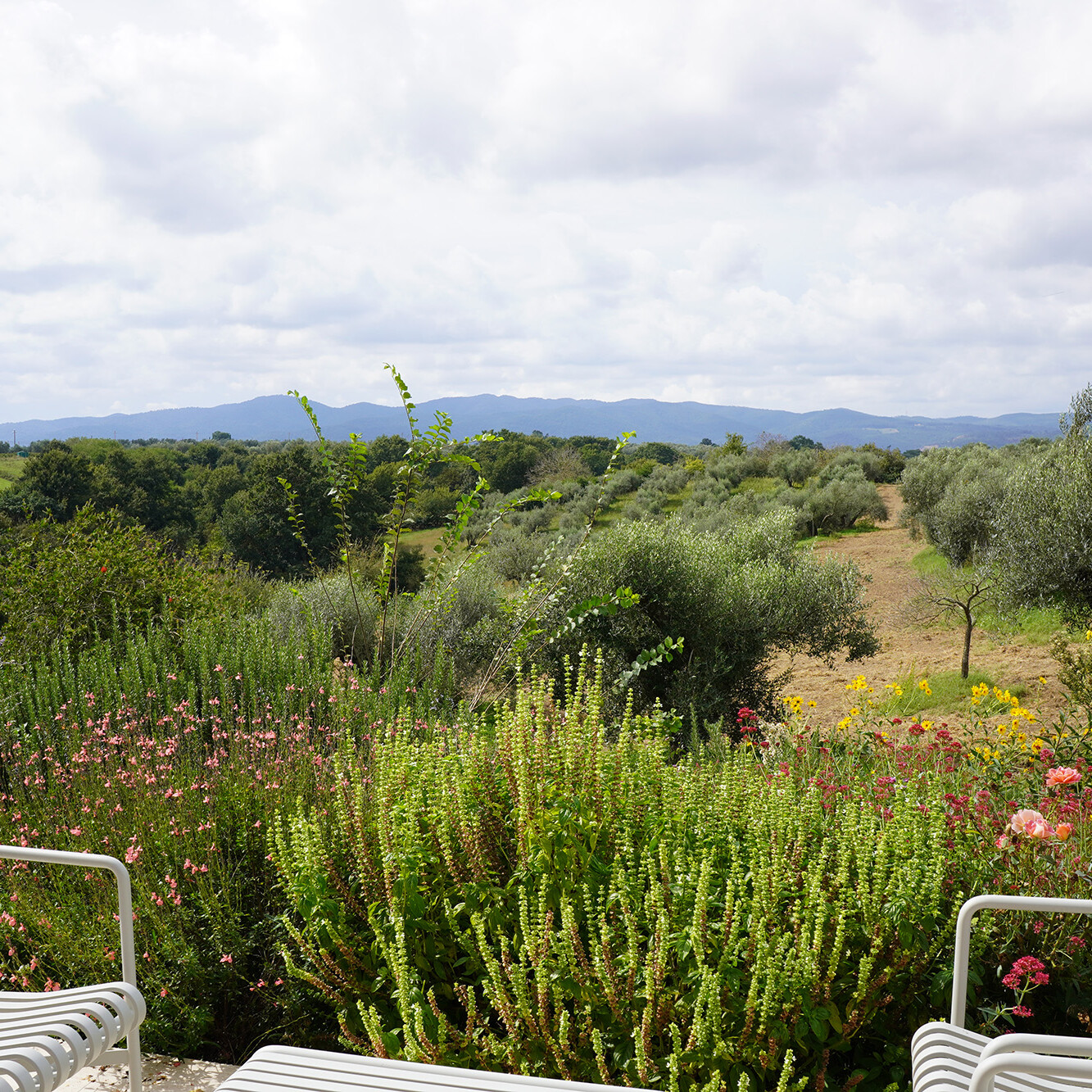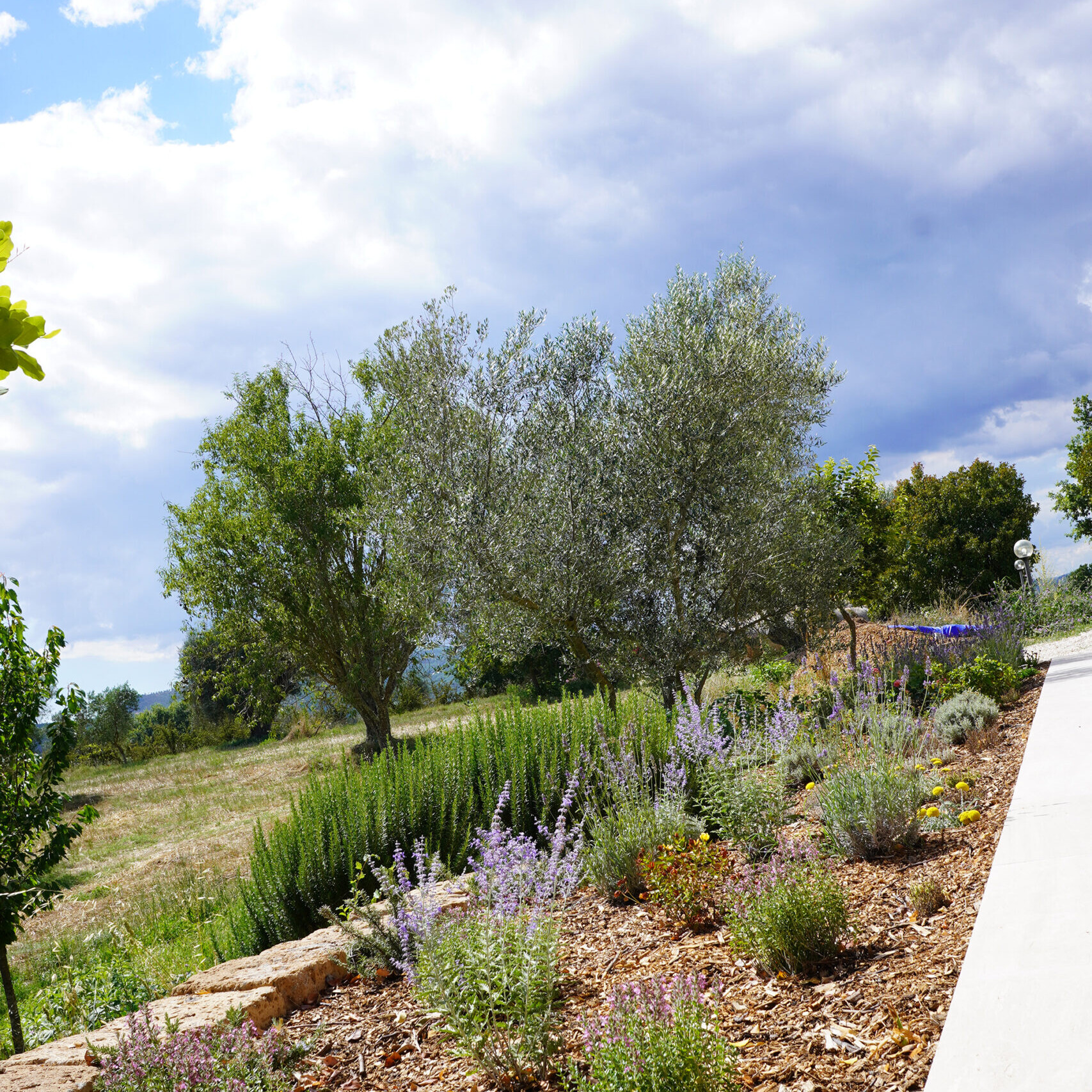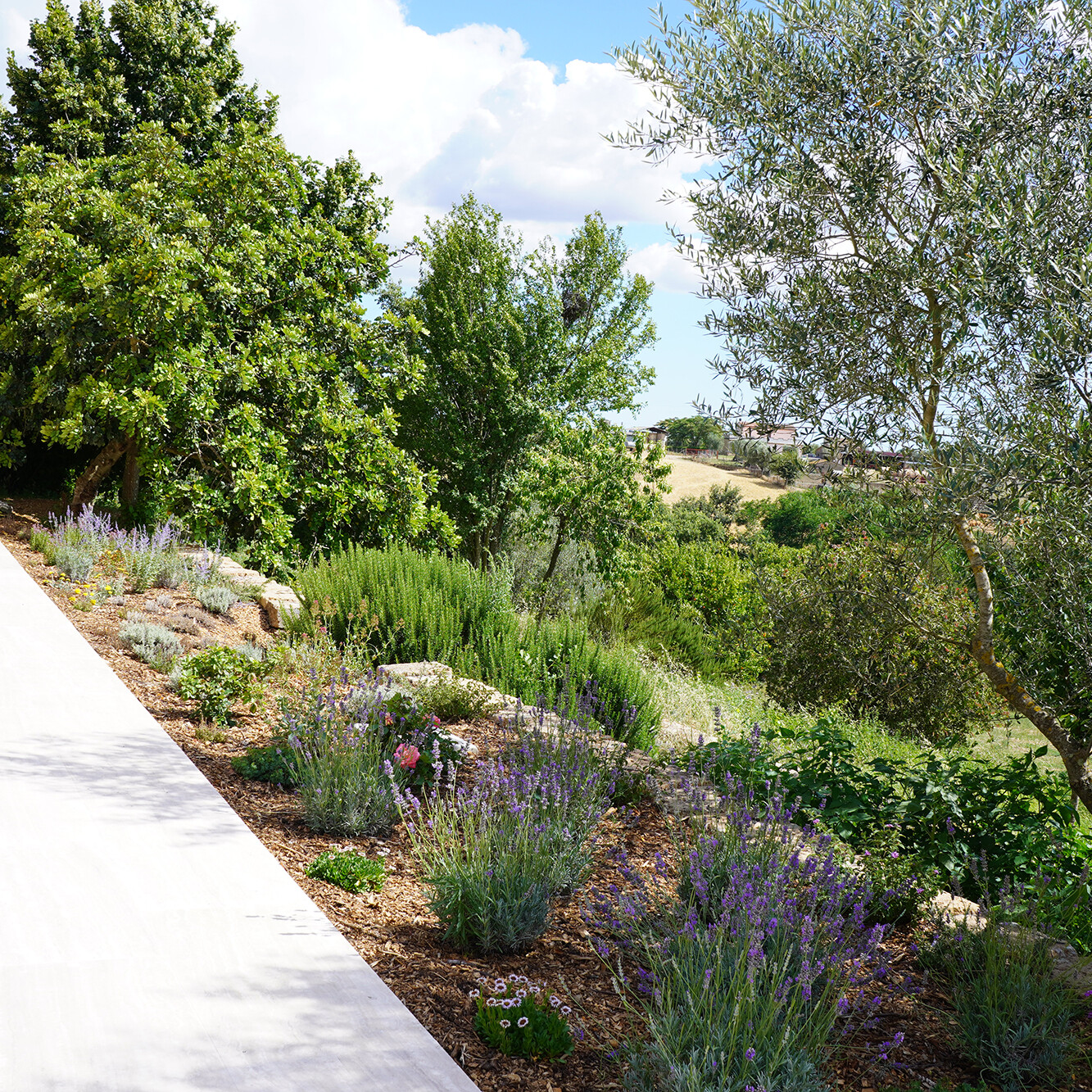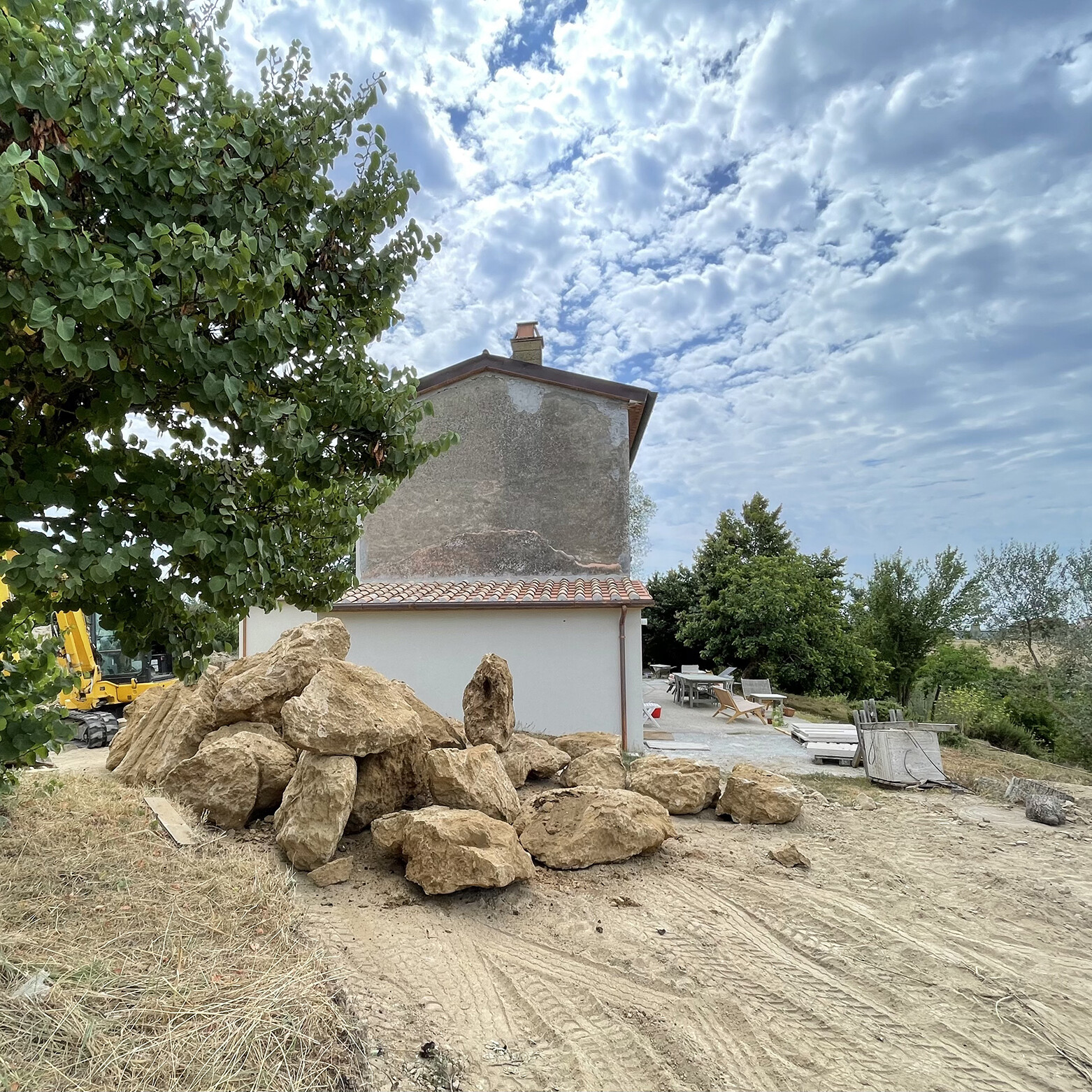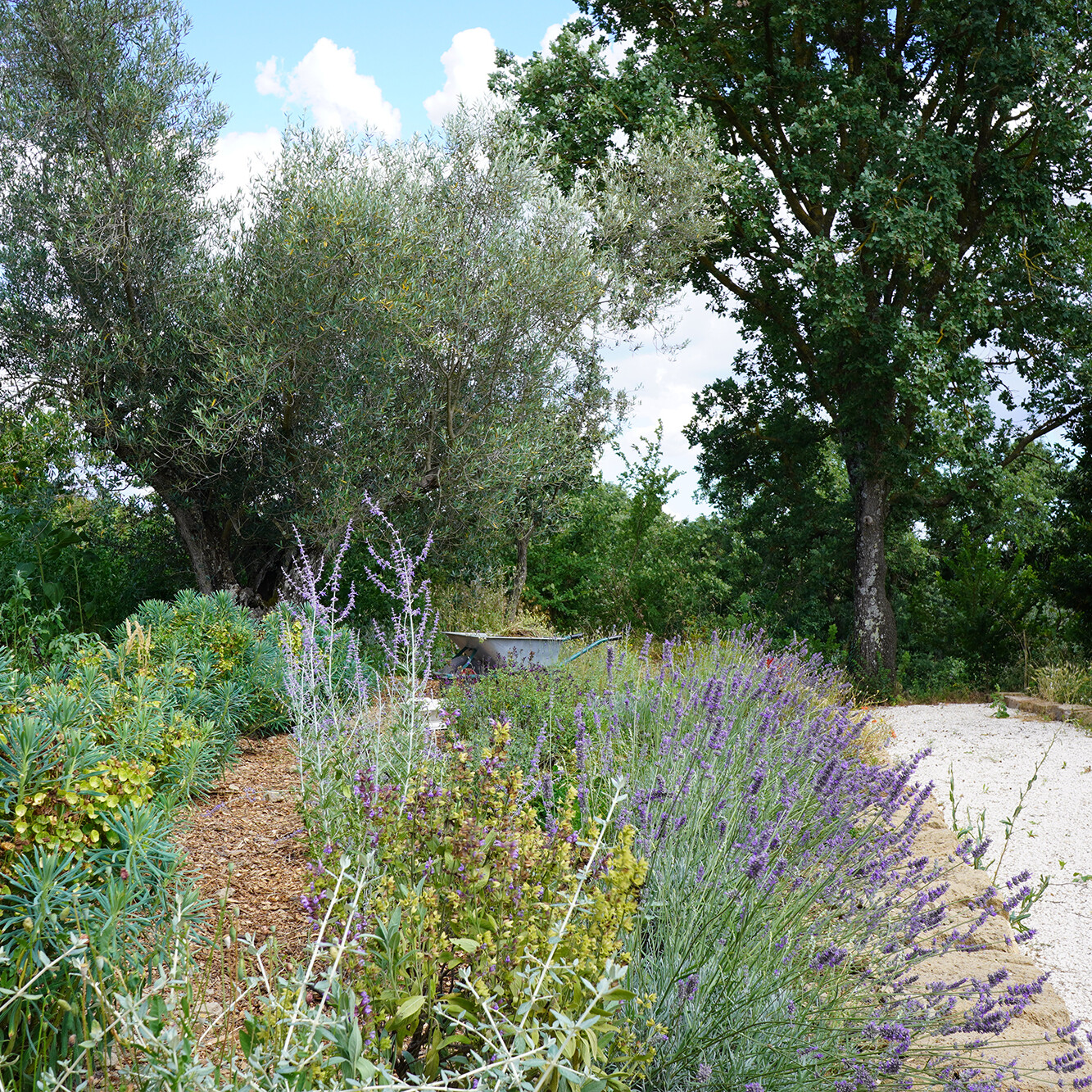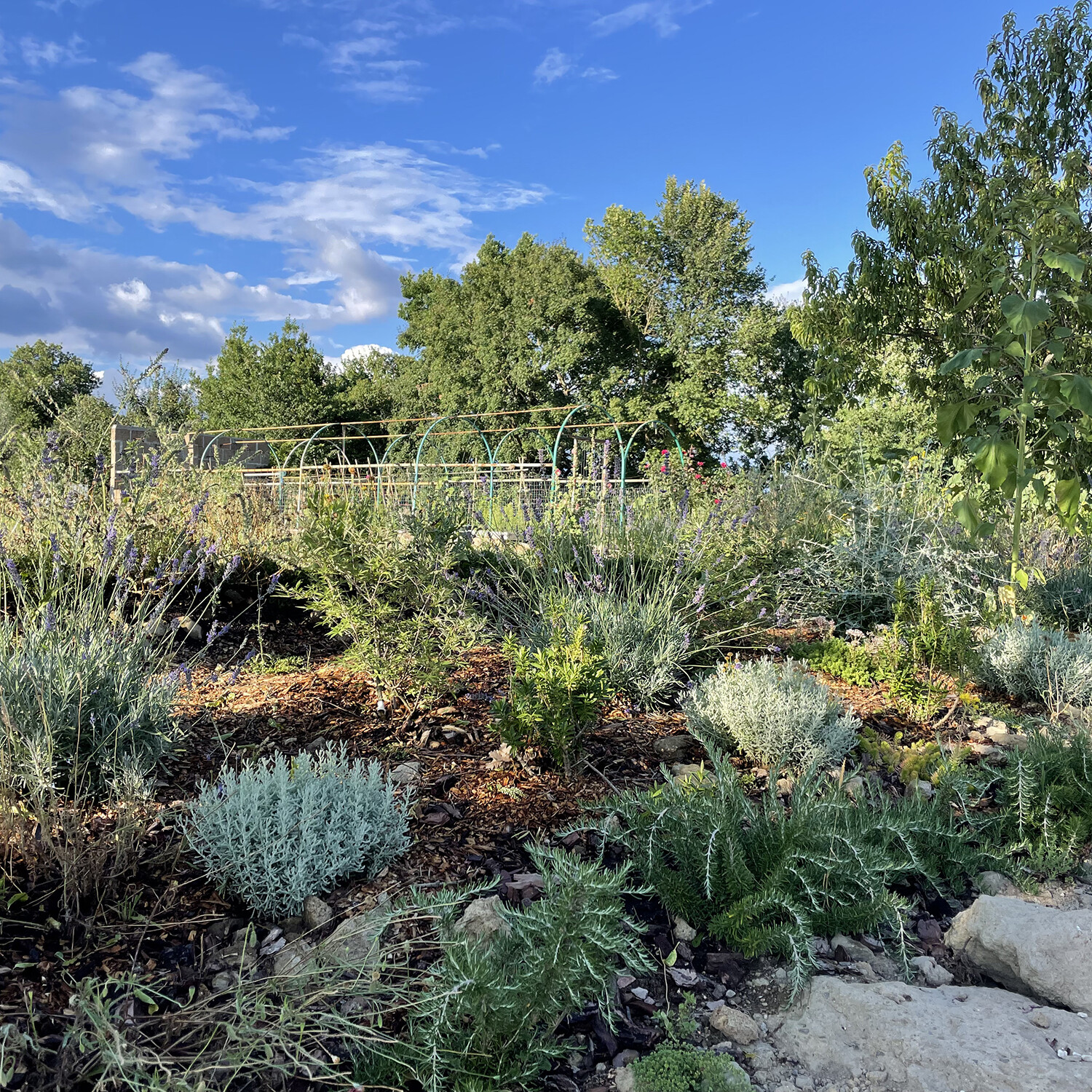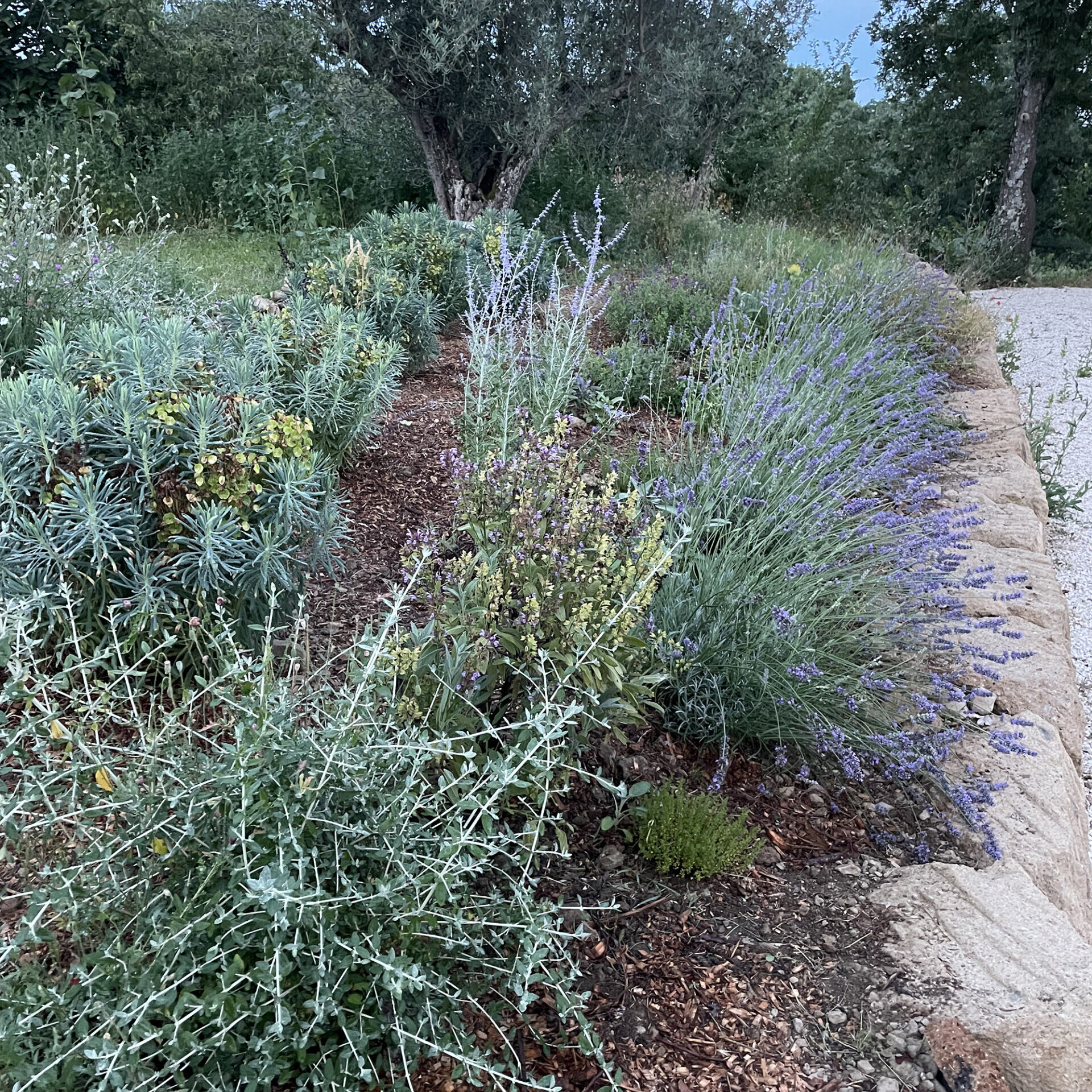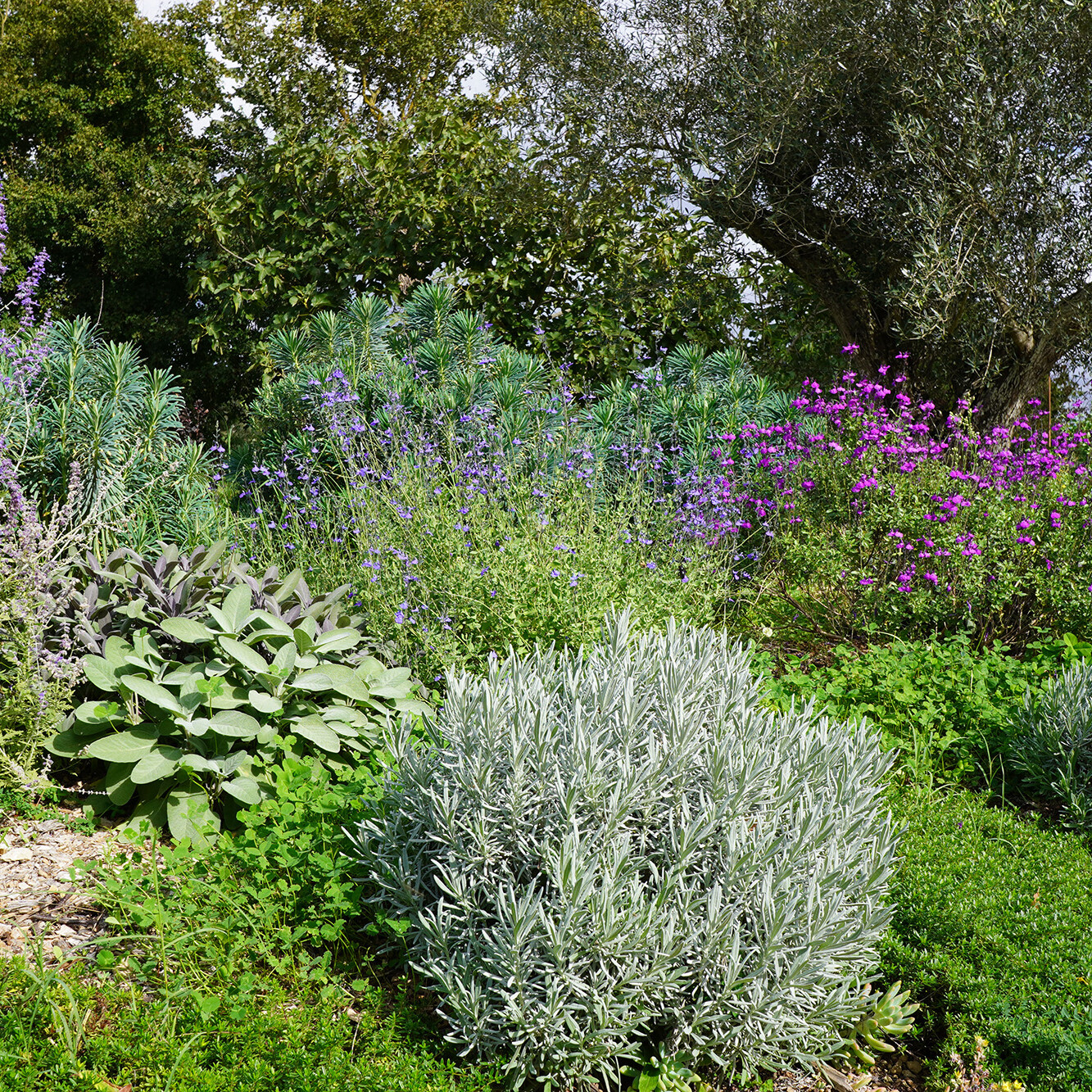The two-story farmhouse, with its converted barn, are a part of the cultural landscape of Southern Tuscany. The 4 Ha land with 120 olive trees had been abandoned for over 15 years as well as all surrounding vegetation.
The main, 75sm terrace at the house entrance marks a plateau with a wide and open view of the rolling hills to the West. Terraced areas were created by way of dry walls, made from salvaged tuff stones, on the steep slope. Here, the perennial plantings are intended as a low boarder and include many misquote repelling, draught tolerant, local species.
To the East, the hill was literally sliding into the house. Here, a long, low dry wall was built with local tuff stone for flooding mitigation and water preservation. This creates a long, wide boarder, which frames the East side of the house and creates a separation to the vegetable garden.
To the South, the converted barn now looks onto a terrace and into a shady, thickly greened garden. This small garden is peaceful and contained, the plateau on which the house is build ending sharply thereafter.
Each side of the house has a different character and relation to the surrounding landscape. Throughout the day and season, spaces for shade or sun revolve around the house. Several different terraces provide possibilities for sitting or relaxing.
In connection to the entire farm, the inner garden zones created around the house have approximately 1000m2.



